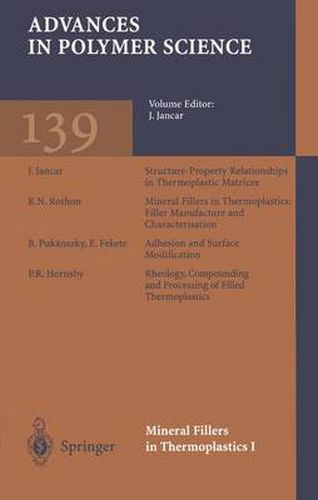Readings Newsletter
Become a Readings Member to make your shopping experience even easier.
Sign in or sign up for free!
You’re not far away from qualifying for FREE standard shipping within Australia
You’ve qualified for FREE standard shipping within Australia
The cart is loading…






This title is printed to order. This book may have been self-published. If so, we cannot guarantee the quality of the content. In the main most books will have gone through the editing process however some may not. We therefore suggest that you be aware of this before ordering this book. If in doubt check either the author or publisher’s details as we are unable to accept any returns unless they are faulty. Please contact us if you have any questions.
In recent years, a growing number of engineering applications of light weight and energy efficient plastics can be found in high quality parts vital to the func tioning of entire equipments and structures. Improved mechanical properties, especially balance of stiffness and toughness, are among the most frequently desired features of the new materials. In addition, reduced flammability is con sidered the single most important requirement for further expansion of plastics into large volume and demanding markets such as construction and mass trans port. Production of power cables also requires flame retardant cable jacketing plastics to replace or at least to reduce consumption of environmentally unsound PVC. The two principal ways to achieve the goals mentioned above include the development of completely new thermoplastic polymers and various modifica tions of the existing ones. Development and commercialization of a new ther moplastic require mobilization of large human and financial resources, the lat ter being within the range from $100 million to $10 billion, in comparison to $100 thousand to $10 million needed to develop and commercialize polymeric mate rial with prescribed end use properties using physical or chemical modification of an existing plastic. In addition, the various markets utilizing thermoplastics demand large flexibility in material properties with only moderate volumes, at the best.
$9.00 standard shipping within Australia
FREE standard shipping within Australia for orders over $100.00
Express & International shipping calculated at checkout
This title is printed to order. This book may have been self-published. If so, we cannot guarantee the quality of the content. In the main most books will have gone through the editing process however some may not. We therefore suggest that you be aware of this before ordering this book. If in doubt check either the author or publisher’s details as we are unable to accept any returns unless they are faulty. Please contact us if you have any questions.
In recent years, a growing number of engineering applications of light weight and energy efficient plastics can be found in high quality parts vital to the func tioning of entire equipments and structures. Improved mechanical properties, especially balance of stiffness and toughness, are among the most frequently desired features of the new materials. In addition, reduced flammability is con sidered the single most important requirement for further expansion of plastics into large volume and demanding markets such as construction and mass trans port. Production of power cables also requires flame retardant cable jacketing plastics to replace or at least to reduce consumption of environmentally unsound PVC. The two principal ways to achieve the goals mentioned above include the development of completely new thermoplastic polymers and various modifica tions of the existing ones. Development and commercialization of a new ther moplastic require mobilization of large human and financial resources, the lat ter being within the range from $100 million to $10 billion, in comparison to $100 thousand to $10 million needed to develop and commercialize polymeric mate rial with prescribed end use properties using physical or chemical modification of an existing plastic. In addition, the various markets utilizing thermoplastics demand large flexibility in material properties with only moderate volumes, at the best.